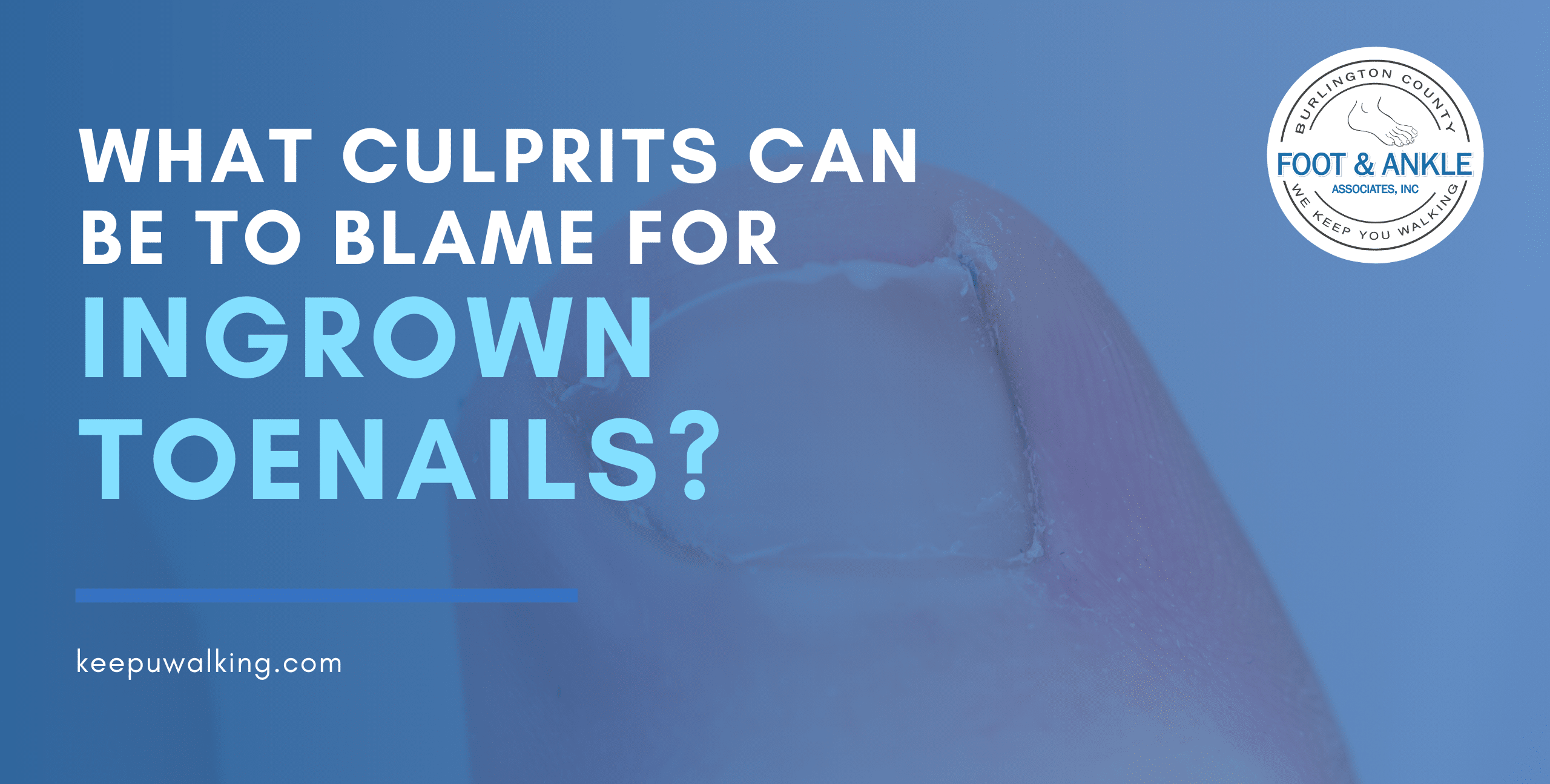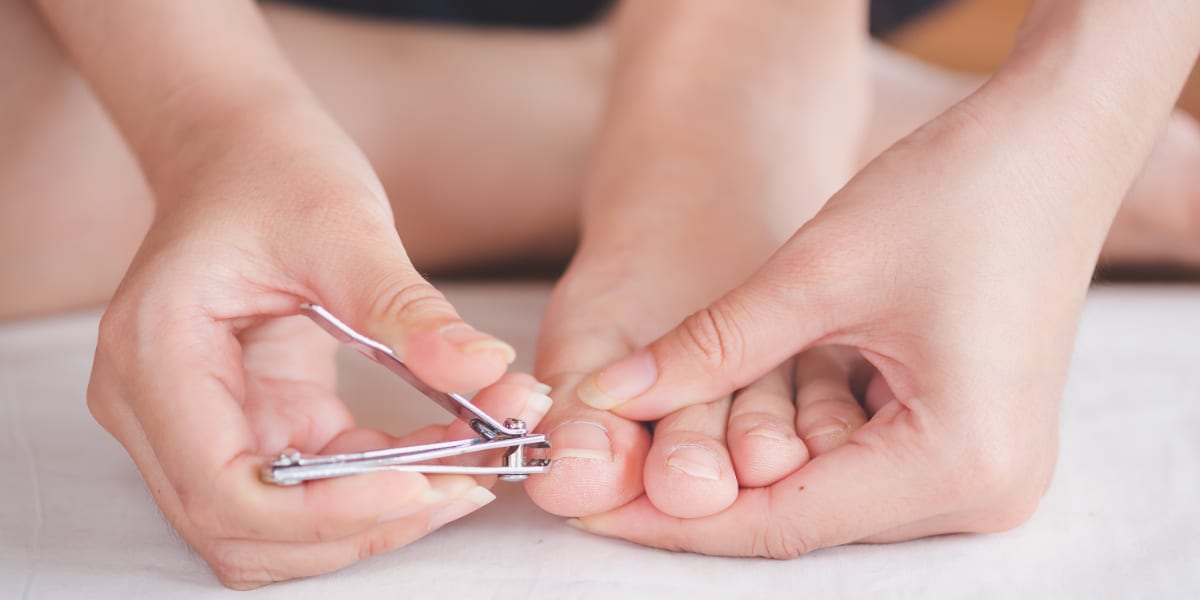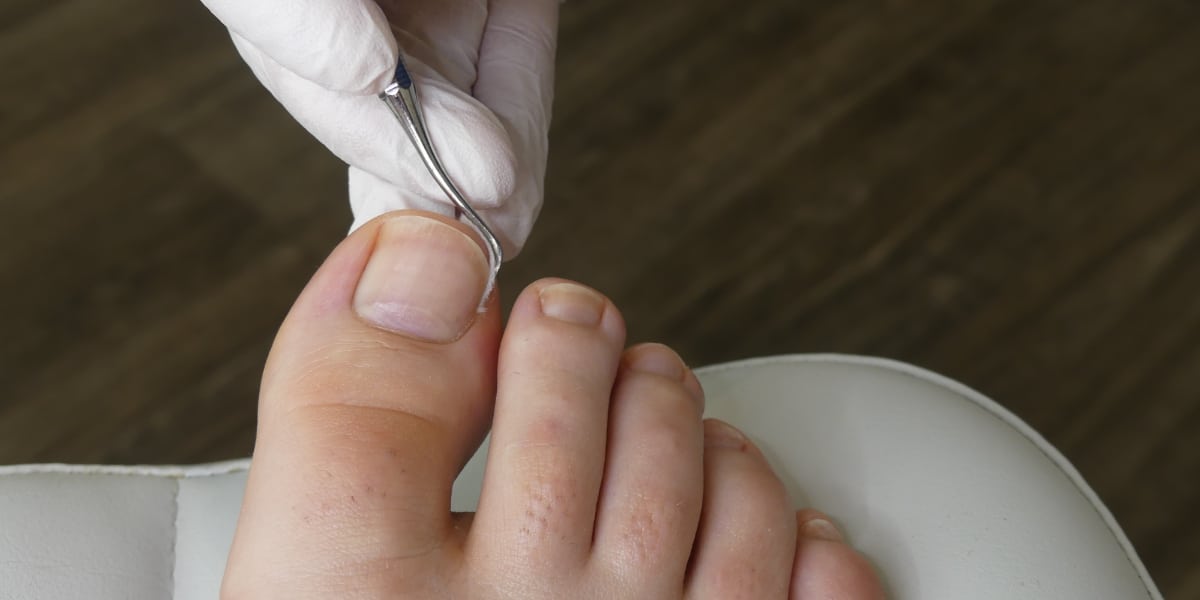What Culprits Can Be to Blame for Ingrown Toenails?
For some, an ingrown toenail seems to be one of those things that will just happen now and then—probably during a time when it is highly inconvenient to have one.
And it is true that an ingrown toenail can just “happen” every once in a great while. The nail starts growing into the nearby skin, causing some pain and tenderness, and often it is mild enough to deal with the matter at home.
However, just because an ingrown toenail can seem to come out of the blue does not necessarily mean there isn’t a cause behind its appearance. This is even more true the more frequently you suffer from them.
If you are getting ingrown toenails on the regular, it is a sign of a deeper problem. But in many cases, it is something you can address with some simple changes that will effectively drop the rate that you are afflicted—and maybe even get rid of the problem for good.
Here are a few of the primary considerations when trying to reduce your risk of ingrown toenails.
Your Toes Aren’t Getting Enough Room
Things need space to grow properly. That includes your toenails.
Toes should have enough room within your shoes to lie flat and straight, as well as wiggle freely. When the toe boxes of your footwear are too narrow or cramped, your toes can take a lot of pressure from both the shoes themselves and their neighboring toes. This can lead to nails that grow curved and inward.
Check how much room you have in your shoes. Not only should there be enough width, but also about a half-inch of space between your longest toe and the inside front of each shoe. Your toes should also not be getting crammed into a pointed front.
Your Toenails Are Receiving Abuse
Your toenails are built to be relatively solid and protective, but trauma can still easily affect them for the worse.
There is, of course, the trauma of dropping something heavy on your foot or stubbing your toe really badly on an object. However, the impacts don’t have to be that severe to cause a problem with ingrown toenails. Smaller impacts repeated over time can also have an influence.
How can these repetitive impacts happen? When your feet are sliding around in your footwear.
If your shoes are too loose, your feet can slide within the shoe, often causing the fronts of your toes to collide with the inside front of your shoes. If you are racking up distance every day—such as with running shoes or on the job in work boots—that can easily lead to trauma.
Many runners have seen or been warned about this type of trauma. It can cause “black toenails,” in which blood collects beneath the nail and it may eventually fall off. When the nail grows back, it may do so in an improper way, becoming ingrown.
You don’t need to experience the unpleasantness of black toenails for impacts to cause ingrown toenails, though. Make sure your shoes fit properly, with enough support in the heel and arch to keep your feet from sliding inside. And if you work with heavy-duty materials, making sure you always have toe protection in your footwear is a must.
You Trim Your Toenails Improperly
Trimming your toenails is not a complicated art, but your methods may still leave you more susceptible to ingrowing.
When trimming, try to cut as straight as possible along the edge, leaving a bit of white. There is no need to cut too closely; you risk hurting your nails and yourself if you do.
If you trim straight but have pointy corners, feel free to file them down a little. Also, despite whatever the Internet or your aunt tells you, do not cut a notch in the middle of your toenail to relieve an ingrown toenail. That doesn’t work.
You Wear High Heels
This one is also simple. Not only do many high heels have a torturous pointed front, but elevating your heel forces pressure against the front of your foot. The more pressure, the more likely it will affect your toenails negatively.
If you insist upon wearing heels, try to keep them relatively low: 2 inches or less is ideal.
What If None of This Helps?
If making any of the changes above helps with your ingrown toenail problem, we couldn’t be happier! But for some people, these suggestions might not work.
That is because some folks can have an inherited tendency for their toenails to grow curved and improperly. In other words, they were born with a greater likelihood of ingrown toenails.
If other treatments are not providing any relief from a consistent ingrown toenail problem, the best option might be a permanent removal of the nail, also known as a matrixectomy. This is a simple, in-office procedure where we remove the nail (using local anesthesia) and treat the underlying nail bed to prevent the nail from growing back.
Take on Recurring Ingrown Toenails
An ingrown toenail that just keeps coming back is a sure sign that something is wrong. We can help you get to the root of the problem and find a solution that provides you lasting relief. Whether you are a runner, a worker, or a member of our military, we can help.
Call our Medford office at (609) 714-0052 to schedule an appointment, or fill out our online contact form with any questions or appointment requests.
© Burlington County Foot & Ankle, Assoc., Inc. All Rights Reserved.
Privacy Policy | Terms & Conditions
Web Design by CP Solutions.
Marketed by VMD Services.



